The post Transitioning Australia’s energy system: Meet Kerim Mekki appeared first on Blog.
]]>Kerim brings more than 25 years of experience, a calm and grounded leadership style, and an eye for innovation — whether it’s navigating policy shifts or solving first-of-a-kind technical challenges.
What drew you into the renewable energy and storage space?
As a physicist, I appreciate the mathematical beauty of engineering. The Maxwell equations, they’re elegant. That’s what drew me in. It might be a bit of a French thing too, you don’t just look for function, you look for beauty.
I’ve always been interested in the stability of large systems, the kind of technical questions that sit right at the edge of physics and engineering. I earned a doctorate in transient stability of large power systems, essentially, how you model and understand what happens to country size grid in the milliseconds after a disturbance.
Over time, I could see that the biggest questions in the energy space were shifting. It wasn’t just about how to make the grid work better, it was about how to make it work differently. Renewables and storage fundamentally change the behaviour of power systems. So I made a deliberate move into this field… and I haven’t looked back.
What do you think sets Australia apart when it comes to delivering renewable energy projects?
Australia sometimes gets underestimated, but we shouldn’t be. Australian engineers are incredibly adaptable, especially those with backgrounds in mining and infrastructure.
That’s maybe the part that gets misunderstood: we have the capability here to deliver complex systems at large scale. We just don’t always communicate about it.
And the other thing? Scale.
In Australia, someone will say ‘we’re going to build a battery the size of an AFL field’ and no one blinks. In Europe, you’d spend ten years doing pilot projects first. Because of Australia’s mining experience, we’re used to building things fast, at massive scale, and just getting on with it and the issues as they emerge.
That kind of delivery mindset is powerful when you’re trying to lead the world in something.
How does AECOM play into that strength?
At AECOM, we have one of the strongest transmission and distribution teams in Australia and New Zealand, which is key, because battery storage isn’t just about the asset itself. It’s about how it integrates with the grid.
Not all the consultants have that deep capability. But we do, and we’ve proven it. Our work on Project EnergyConnect, VNI West and Central West Orana, shows the scale and complexity we can handle when integrating major transmission assets to the grid.
What excites you most about the future of energy?
To me, it’s simple, we’re about to rewrite the operating manual for the power grids.
For 200 years, power systems were built around rotating machines. Now, with renewables and storage, we’re entering the age of power electronics. It’s a completely different way of managing power, at a different time scale, and we get to help write the new rules.
It means rethinking everything, how we model systems, how we ensure stability, how we respond in milliseconds to change.
What advice would you give to young engineers entering the field?
First principles. Always.
You’ve got to be able to trace things back to the physics and the maths. You have to remember equations you studied, even if it was 25 years ago.
So learn it properly. And more importantly, remember it. That foundational knowledge will carry you a long way.
And finally, what do you do to recharge outside of work?
Cycling. I love getting out on the bike, but you won’t find any photos of me on Strava. I am old school and I don’t take my phone. It’s just about being in the moment. Same with engineering, sometimes you’ve got to put the distractions down and just focus on the road ahead.
I started riding in Tunisia, and in Grenoble where cycling is a big part of the culture. One of my favourite classic rides is Grenoble to Gap in the Alps, with decent elevation.
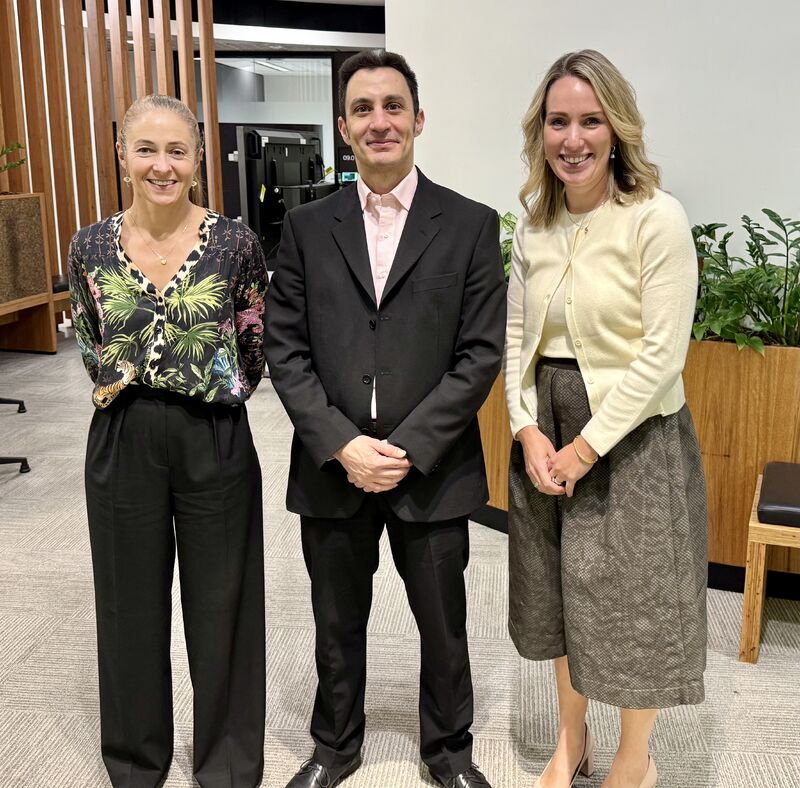

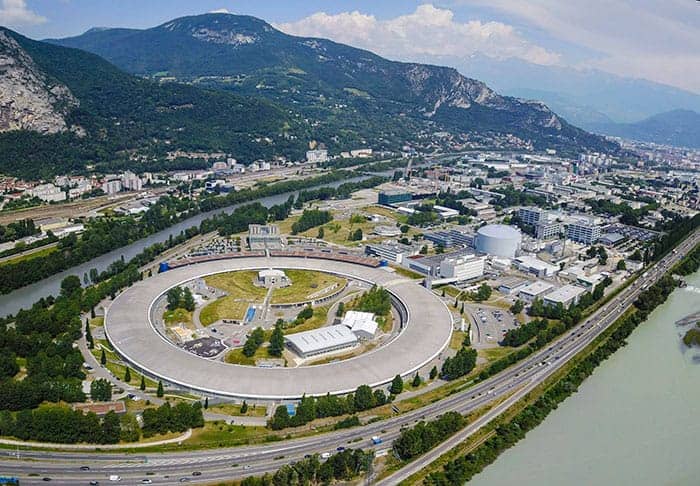
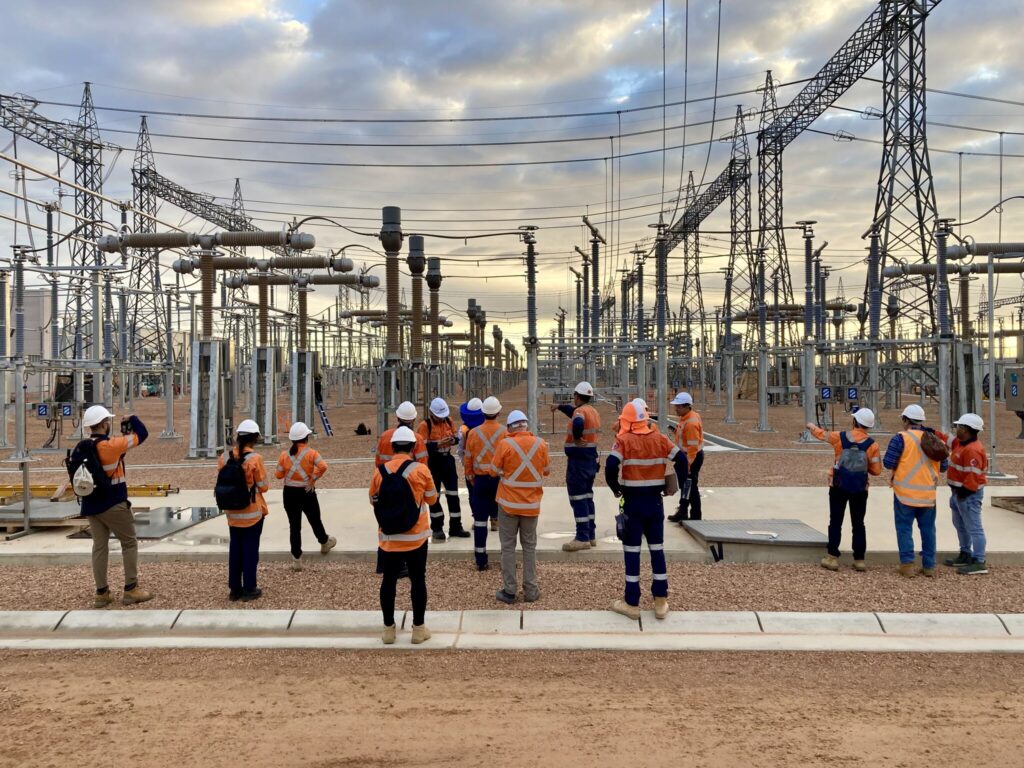
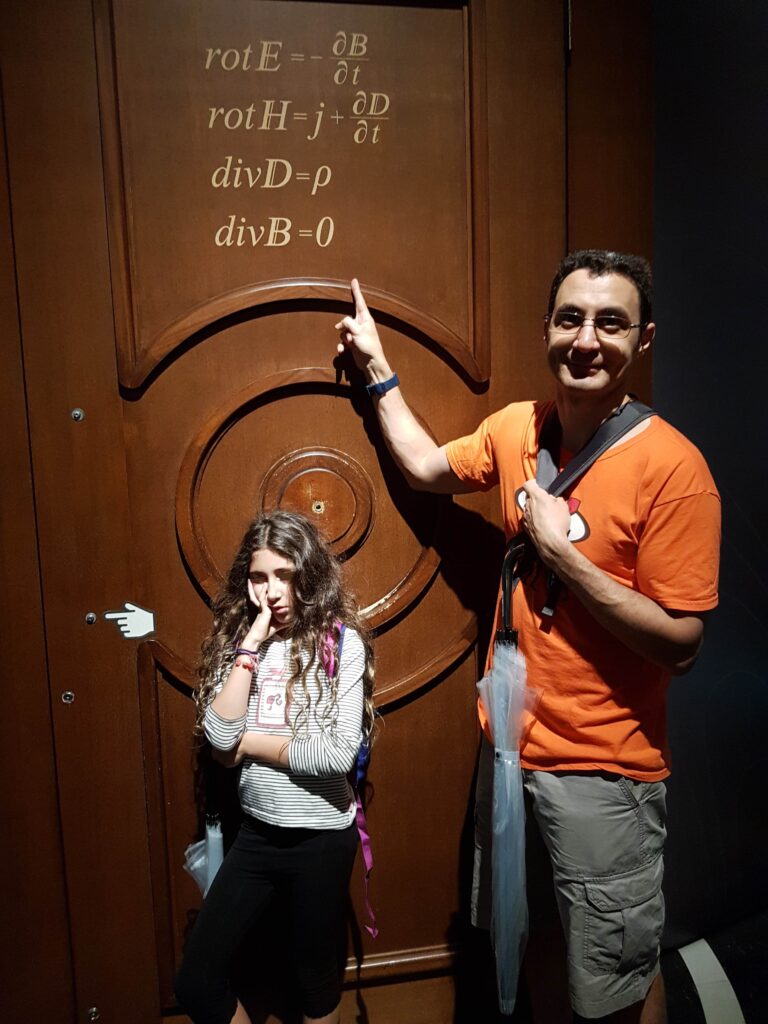
The post Transitioning Australia’s energy system: Meet Kerim Mekki appeared first on Blog.
]]>The post Powering Europe’s net zero future: Why pumped storage hydropower is vital appeared first on Blog.
]]>Pumped storage: Europe’s renewable battery
Europe increasingly relies on wind and solar power, but their intermittent nature brings significant challenges. A proven solution lies in pumped storage hydropower — a mature technology that effectively acts as a massive, rechargeable battery. PSH stores excess renewable energy by pumping water uphill, releasing it to generate electricity exactly when it’s needed, providing reliable, flexible power on demand.
Currently, Europe has around 55 gigawatts of pumped storage capacity. Yet, according to the Outlook, we must more than double this capacity by 2050 to reliably support the EU’s energy transition and achieve net zero (p. 24).
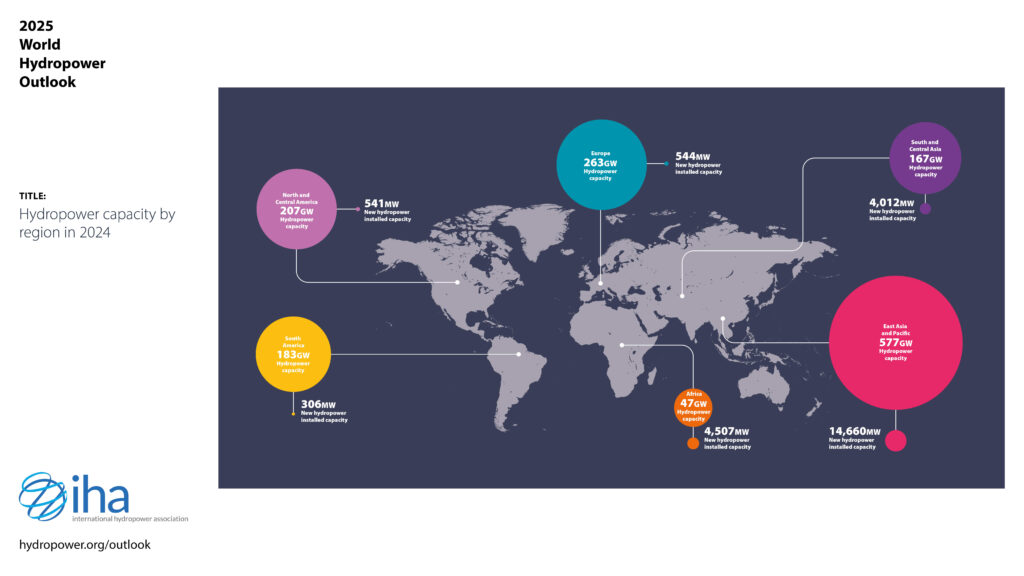
Tackling Europe’s ageing hydropower infrastructure
Europe faces an urgent infrastructure challenge: nearly 70 percent of our pumped storage facilities are over 40 years old. These ageing plants need significant modernisation to remain efficient and safe (p. 22). Upgrading existing facilities offers a practical, cost-effective, and rapid route to increasing renewable storage capacity compared to building entirely new plants.
This need for modernisation is also a chance to introduce digital technologies — such as artificial intelligence, more sophisticated predictive maintenance and improved remote monitoring — to boost operational efficiency and minimise down time.
Barriers to new pumped storage development
Despite strong support from developers and grid operators, Europe’s progress on new pumped storage hydropower projects remains slower than desired. High upfront investment — typically exceeding £1 billion per gigawatt of installed capacity — can discourage potential investors. Complex permitting processes, lengthy project timelines, construction risks, and limited availability of specialist contractors and equipment also hold back development.
The Outlook contrasts Europe’s slower pace with the rapid pumped storage growth seen in countries with centralised economies, such as China. However, positive policy changes are emerging. For instance, the UK’s introduction of a ‘cap and floor’ financial model seeks to strike a balance by giving investors greater certainty, while ensuring affordability for consumers and taxpayers.
Addressing these barriers will be crucial if Europe is to fully harness pumped storage’s potential for a secure, renewable energy future.
Sustainability is non-negotiable
The Outlook emphasises that Europe’s pumped storage expansion must prioritise sustainability. In a region where environmental regulations and public expectations are high, careful planning, rigorous environmental assessments, and meaningful engagement with local communities are crucial.
Digital innovation powering progress
Europe is uniquely placed to lead in hydropower digitalisation. The Outlook underscores the transformative impact of digital solutions on pumped storage facilities (p. 46). Digitalisation doesn’t just make pumped storage operations more efficient — it significantly reduces environmental impacts and operational costs.
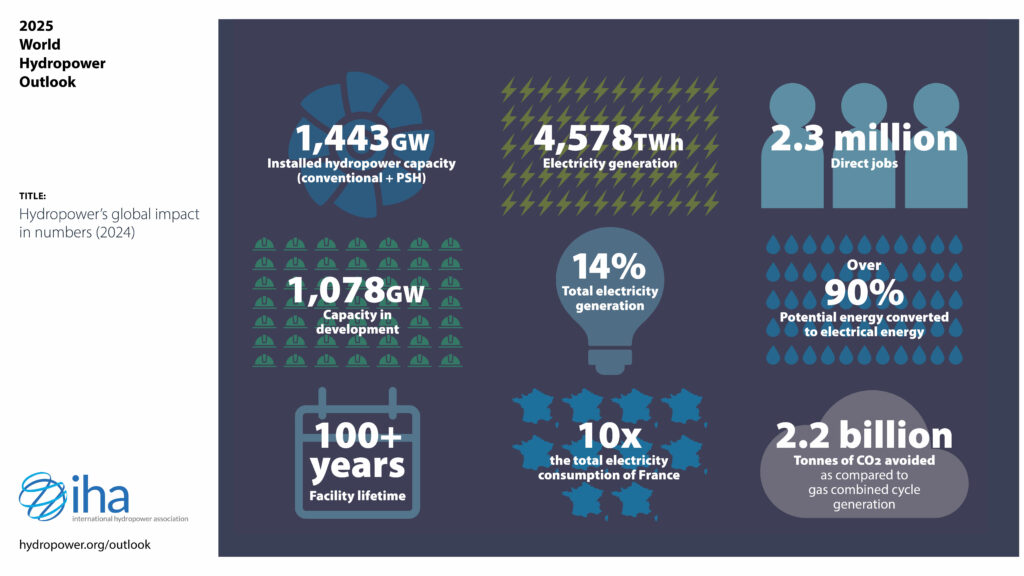
The question is pace
Across Europe, the need for grid-scale storage is widely recognised. The challenge isn’t awareness — it’s action. Governments and energy providers understand that without substantial investment in pumped storage, the transition to a low-carbon energy system won’t be achievable or reliable. The real question now is how quickly we can deliver the infrastructure needed to support it.
At AECOM, we’re committed to supporting this important transition. With our global expertise and local knowledge, combined with a focus on sustainability and innovation, we’re ready to help Europe accelerate the rollout of pumped storage.
Explore the full 2025 World Hydropower Outlook here.
The post Powering Europe’s net zero future: Why pumped storage hydropower is vital appeared first on Blog.
]]>The post People Spotlight: Meet Kelly Pearsall appeared first on Blog.
]]>Kelly has worked in the environmental field for more than 20 years. As Director of Environment and TechEx Lead (Environment + Energy) for Australia and New Zealand, she drives business growth, technical leadership and capability development across the region.
Kelly’s work spans complex State Significant Infrastructure, international environmental and social assessments, and project governance roles. She’s played a key role in establishing feasibility and securing environmental approvals for some of Australasia’s largest infrastructure projects, including WestConnex (M4 East and M4–M5 Link) in Sydney and the Purari Hydropower Project in Papua New Guinea.
Known for her people-driven leadership, Kelly brings a clear, outcomes-focused approach with strengths in stakeholder engagement, project directorship and aligning environmental performance with our clients’ broader infrastructure goals.
Tell us about what inspired you to join the industry.
I grew up in the 1980s during a time where environmental awareness was growing and the plight to protect our ocean mammals inspired a generation. My sustainability values formed by this exposure at a formative age, combined with frequent opportunities to spend time in nature, with my grandparents and wider family who were all gardeners and spoke fondly of these values.
I was lucky enough to spend my childhood visiting Oatley Regional Park, which contains 45 hectares of Sydney’s prime bushlands, 310 plants species and 107 bird species. The opportunity to study this biology and be part of protecting it was ultimately what drove me to make a career for myself in environmental consulting at a time when it was only burgeoning.
I started out as an ecologist, and early in my career developed a broad base of experience in smaller town planning and environmental consultancies. I’ve taken opportunities to gain experience in the full gamut of disciplines, from noise and air monitoring, koala surveys, water treatment, impact assessments, master-planning, project management, expert witness reporting, permitting, detailed design development and construction management. My ‘say yes’ mindset allowed for rapid growth in diverse skills and associated responsibility.
Having such a broad experience-base led me to realise that where I could make a material difference was by bringing an ‘ecosystem mindset’ to early phase project definition, connecting and collaborating with clients and in-house designers at an organisation like AECOM.
I was lucky enough to spend my childhood visiting Oatley Regional Park, which contains 45 hectares of Sydney’s prime bushlands, 310 plants species and 107 bird species. The opportunity to study this biology and be part of protecting it was ultimately what drove me to make a career for myself in environmental consulting at a time when it was only burgeoning.
What is your favorite AECOM project that you’ve worked on and why?
My favourite types of projects overall are those where I can work collaboratively in shaping the project with a client. One that stands out was my role as the Australian Environmental Lead for the Purari Hydropower Project, a pre-feasibility project for a hydropower plant in Papua New Guinea (PNG). We assessed the potential to send power by cable from PNG and through a 1,300kilometre high-voltage transmission line to Far North Queensland (FNQ), Australia.
I collaborated closely with clients including EDF, Origin Energy and PNG Energy Developments Ltd, and AECOM’s trans-Tasman team. The feasibility project focused on identifying, evaluating and refining high-voltage transmission corridor and route options across remote Pacific island regions. This involved navigating challenging terrain, including large, dense rainforests and wild rivers.
I coordinated our team’s reconnaissance mission by light aircraft over the Torres Strait Islands and Far North Queensland — an unforgettable career highlight. We conducted fieldwork and extensive GIS mapping to inform the design and multi-jurisdictional planning approval pathways of the project, to meet World Bank Sustainable Development Principles and Australian Commonwealth standards. We also conducted extensive in-country social mapping, including Indigenous and stakeholder consultations in both FNQ and PNG. These insights directly informed the development of stakeholder engagement strategies and Indigenous Land Use Agreement planning for future stages of this multinational energy transition project.
I coordinated our team’s reconnaissance mission by light aircraft over the Torres Strait Islands and Far North Queensland — an unforgettable career highlight.
Tell us a story of how your work positively impacted the community.
As Environment Lead, I oversaw the construction of a 17-kilometre desalination pipeline project through urban and contaminated areas, and across Botany Bay. This project delivered significant community benefits, most notably enhancing Sydney’s drinking water security during drought.
We engaged the community extensively during this project and embedded the local benefits we identified during this engagement. These benefits included the creation of a parkland on the shores of Botany Bay, adding beach accessibility platforms in the suburb of Kurnell and including public art along the pipeline route. Through our environment-led design approach, we successfully avoided adverse environmental and community impacts, while restoring native vegetation in the corridor adjacent to the nearby RAMSAR wetlands.
Our alliance that designed, permitted and delivered this project over a three-year period won several design and construction awards for our work.
Through our environment-led design approach, we successfully avoided adverse environmental and community impacts, while restoring native vegetation in the corridor adjacent to the nearby RAMSAR wetlands.
Share a piece of career advice.
Say yes. Take on the less glamorous tasks and problematic projects, be collaborative and complete them well. You’ll reap the opportunities and choices that flow from this.
Don’t go dark on clients or your internal peers, especially if you have a delay or issue, get in front of it and show you’re acting fast to resolve it.
As you progress in your career, look for opportunities for your team and elevate their profiles in your networks, use your local, regional or global platform.
Lastly, stay curious, and think broadly about who else you can bring in to your team to solve your clients’ complex issues.
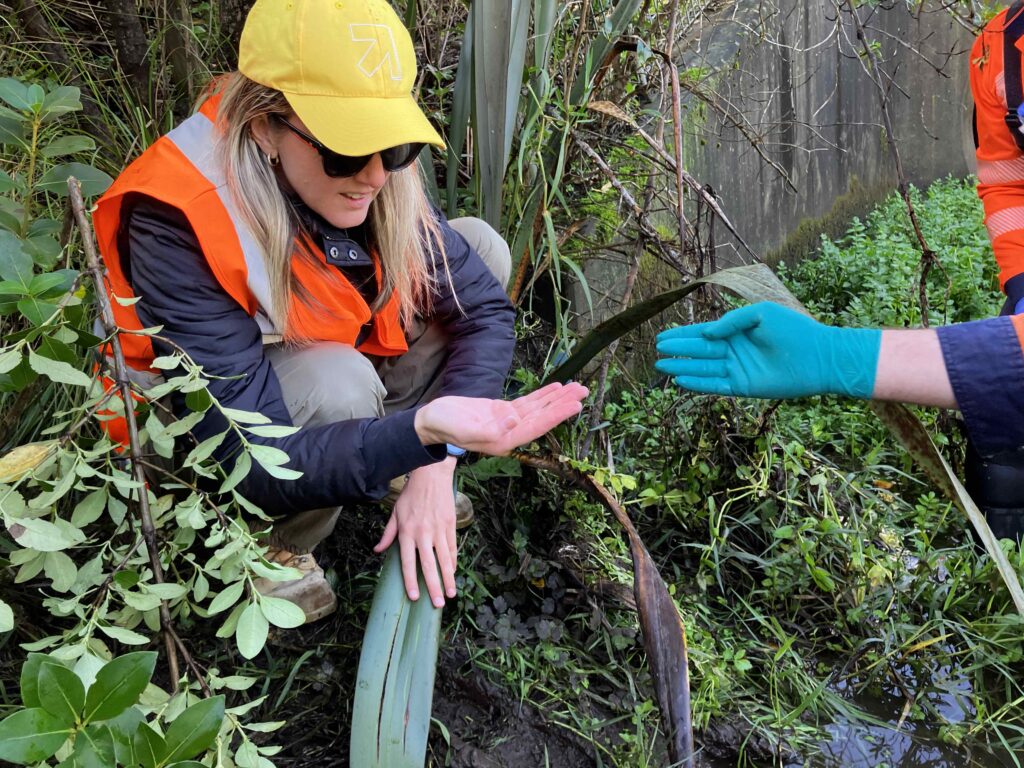
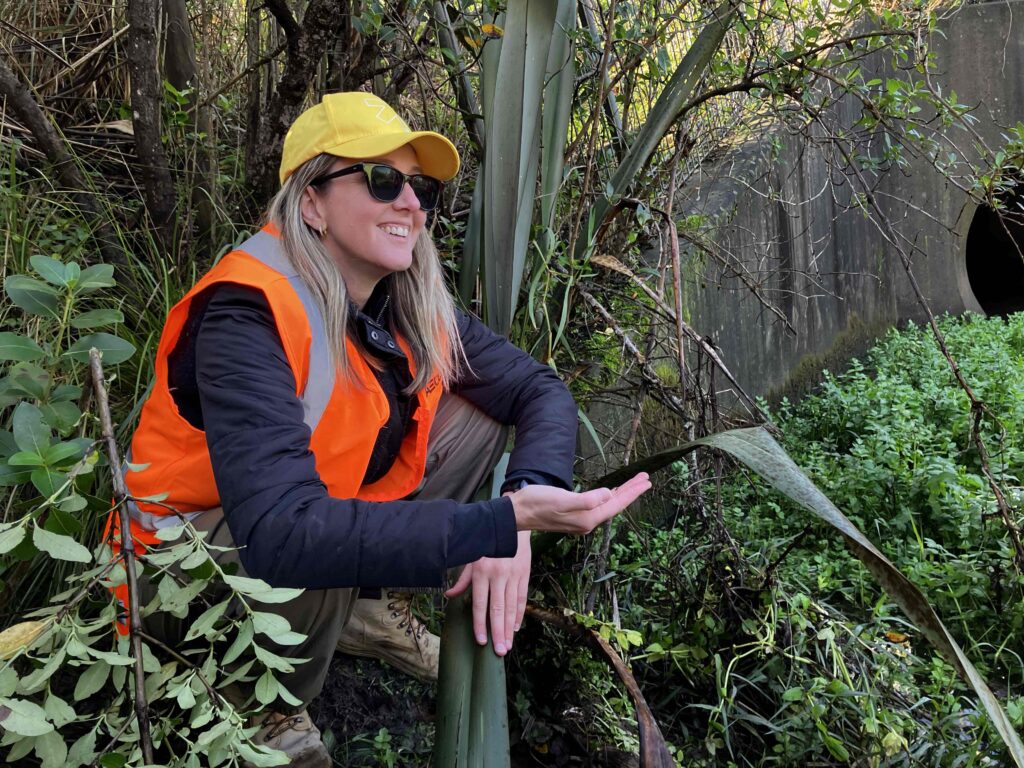
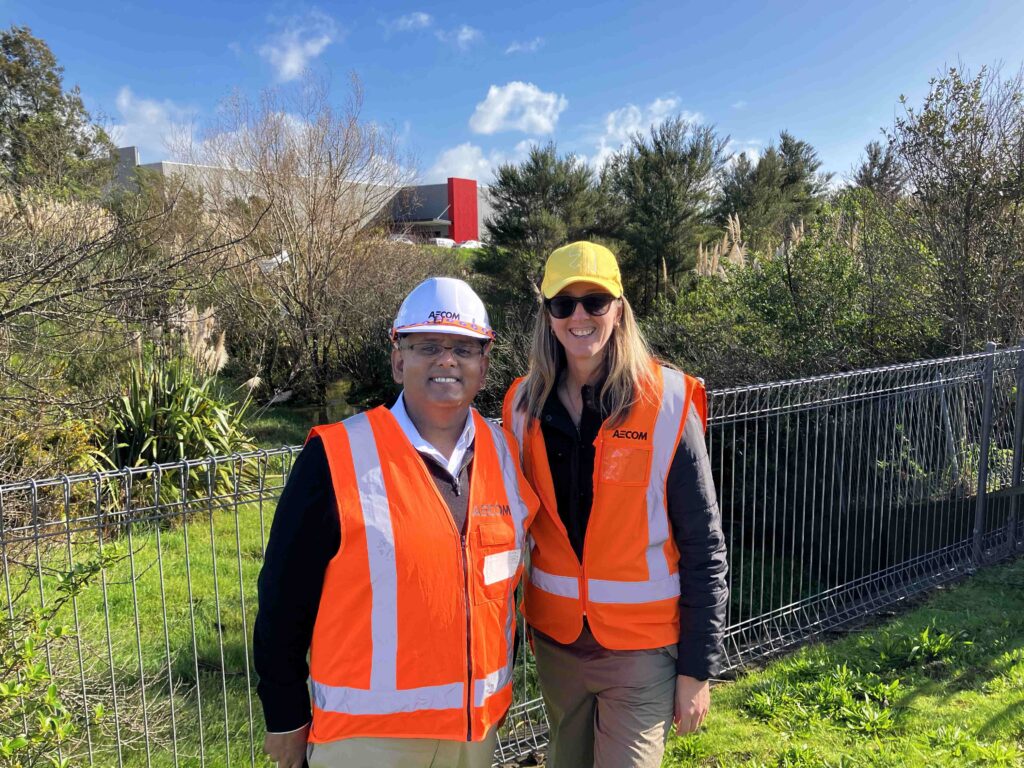
The post People Spotlight: Meet Kelly Pearsall appeared first on Blog.
]]>The post People Spotlight: Meet Sarah Falconer appeared first on Blog.
]]>Sarah Falconer has over 25 years of experience in the environment field, specializing in Environmental Impact Assessments (EIA) and consenting for large complex infrastructure projects. Sarah is passionate about net zero and working with our clients to help them achieve their decarbonization goals. Sarah is responsible for growth within the Energy sector across our Environment and Sustainability range of services. She leads complex energy consenting/EIA projects and develops long term client relationships.
What inspired you to join the industry?
Upon graduating, I embarked on a career in environmental consulting, where I quickly encountered a diverse array of projects and gained a wealth of experiences that the field has to offer. It was this diversity, along with working in partnership with our clients to help them to solve challenging problems, that I found so motivating, and still do. It is a pleasure to help clients to navigate their way through complex and evolving planning processes as well as finding innovative solutions to environmental impacts that result from new infrastructure projects. No two projects are ever the same, and there has never been a more exciting time to work in energy. The urgency and scale of the energy transition make this moment truly transformative.
It is a pleasure to help clients to navigate their way through complex and evolving planning processes as well as finding innovative solutions to environmental impacts that result from new infrastructure projects.
What is your favorite AECOM project that you’ve worked on and why?
I recently led two consenting projects for new hydrogen power development projects. It’s been exciting to see new technologies moving into mainstream developments. Any novel technologies always pose new and challenging consenting risks that need to be considered fully to give regulators and stakeholders comfort and buy in to the projects and this was no exception on these projects. As Project Director, I took ultimate responsibility for delivering to client satisfaction and ensuring that as a project team we met all regulatory requirements. It has been really satisfying to see both projects successfully progress through the consenting process and to receive positive client feedback on our collaborative working.
It has been really satisfying to see both projects successfully progress through the consenting process and to receive positive client feedback on our collaborative working.
Tell us a story of how your work positively impacted the community.
Engaging with the local community is a critical aspect of any proposed new development. One of the rewarding parts of my role is working with AECOM and clients to identify opportunities for creating value for communities within new proposed developments. This could include bringing local small and medium enterprises onto the project team, using our AECOM volunteering days to support local initiatives, and supporting STEM training through local schools and bringing apprenticeships into the team. For example, we have recently been commissioned to deliver three large onshore wind farms for a renewable energy developer and as part of our submission we were proud to establish ten social value commitments which we will implement as the projects progress. These include the use of local supply chain, engagement with schools, colleges and universities, provision of support to local community energy groups and prioritizing local delivery.
Engaging with the local community is a critical aspect of any proposed new development. One of the rewarding parts of my role is working with AECOM and clients to identify opportunities for creating value for communities within new proposed developments.
Share a piece of career advice.
Be open and try to take every opportunity offered to you, even if it doesn’t seem like the obvious career step. We all learn from new experiences giving us the confidence to develop individual skills and careers further. Often, it is the unexpected opportunities that lead to the greatest rewards.
The post People Spotlight: Meet Sarah Falconer appeared first on Blog.
]]>The post People Spotlight: Meet Scott Christian appeared first on Blog.
]]>Scott is a Chartered Civil Engineer and Fellow of the Institution of Civil Engineers (ICE), with almost 30 years of experience in the UK nuclear industry. As an ICE Supervising Civil Engineer, Scott is committed to mentoring the next generation of engineers. His career spans a wide range of complex nuclear sector projects, including asset management, waste retrievals, decommissioning and demolition, and the design substantiation of legacy facilities.
What inspired you to join the industry?
From a young age, I found myself drawn to engineering — largely inspired by my best friend’s dad, who worked in the field. Coming from a family with professions in the General Post Office and insurance services, I didn’t have a technical background, but I really enjoyed subjects like technical drawing at school. That early interest led me to complete a work experience placement at an aeronautical engineering facility, where I had the opportunity to learn about aircraft engine maintenance. It was a fantastic experience and cemented my desire to pursue a career in engineering.
I later applied for an apprenticeship at another aeronautical firm, but during the interviewing process they encouraged me to consider an engineering degree given my academic strengths. My family background meant I hadn’t considered further education as an option, but I took that advice seriously and went on to study civil engineering at university.
Upon graduation, I had the opportunity to work with Sir Robert McAlpine on the construction of a large-scale processing facility within the nuclear sector; seeing the project from the early excavation work right through to handover for mechanical, electrical and process equipment fit out. After that, I took opportunities to develop my career with several other companies in the nuclear industry, both on the delivery and client sides.
What continues to inspire me is the sheer diversity of the sector — no two projects are the same. Whether it’s complex structural new builds or finding solutions to small-scale issues on practically inaccessible elements, each challenge brings new learning and keeps me motivated to grow. This variety is especially evident in the work our nuclear practice delivers — from major decommissioning projects to multi-million-pound mega builds, and from local advisory roles to supporting clients through their project delivery processes. The impact of this work is significant: we’re not only driving progress but also removing risk to both the community and the workforce, ensuring safer, more efficient outcomes across the board.
What continues to inspire me is the sheer diversity of the sector — no two projects are the same. Whether it’s complex structural new builds or finding solutions to small-scale issues on practically inaccessible elements, each challenge brings new learning and keeps me motivated to grow.
What is your favourite AECOM project that you’ve worked on and why?
One of the most rewarding projects I’ve worked on involved a major decommissioning and demolition effort delivered under an alliance contract at Sellafield site in Cumbrian coast, Northwest England, UK. I was responsible for leading the civil, structural and architectural design on the client’s behalf, collaborating closely with an integrated team of AECOM and client-side professionals to deliver a comprehensive design solution from start to finish.
What made this project particularly memorable was the strength of the teamwork. We faced numerous unexpected challenges – from unforeseen ground conditions and persistent foundation issues to significant regulatory scrutiny. Each hurdle required creative problem-solving, and we relied on our shared expertise and trust in one another to push through.
That shared experience brought out the best in everyone. We adopted innovative methods we hadn’t anticipated at the outset and grew enormously through the process — both as professionals and as a team. A major milestone was the successful decontamination and removal of a high-risk structure, which had been considered one of the most challenging elements of the project. This solution not only eliminated critical safety concerns but also demonstrated the power of collaboration and creative problem-solving under pressure.
What made the project stand out were the exceptional and resilient individuals I worked alongside and the transformative learning that came from overcoming adversity together. For me, it was a clear example of how passionate we are about applying the full scope of our capabilities to the sector.
What made this project particularly memorable was the strength of the teamwork. That shared experience brought out the best in everyone. We adopted innovative methods we hadn’t anticipated at the outset and grew enormously through the process — both as professionals and as a team.
Tell us a story of how your work positively impacted the community.
One of the most meaningful aspects of my role has been working with young people through STEM outreach – particularly those who might not typically see engineering as a viable path. I’ve been actively involved in initiatives like the Cumbria Youth Alliance’s Bridging Horizons program, which focuses on students from underrepresented or disadvantaged backgrounds, including those who have different needs or have stepped away from formal education settings.
My efforts focus on introducing civil engineering to students aged between 11-14, especially those in technical or vocational learning environments. We aim to make the subject tangible and inspiring, whether through practical workshops, hands-on activities or site visits to projects. The goal is to demystify engineering and reassure that there’s space for everyone in this profession, even if it’s not something they’d previously considered.
I also partner with educators to review and adapt the curriculum, embedding civil engineering concepts in ways that resonate with students’ real-world experiences. Beyond the classroom, I contribute to CV-writing workshops, career advice sessions and networking opportunities to help open doors for young people. I always involve early careers colleagues for many of these activities too, giving them opportunities to grow and give back to the communities through mentorship.
What’s truly rewarding is witnessing the moment a student realises they belong in this space – someone who might have never imagined themselves pursuing a career in engineering. It’s about unlocking potential, fostering inclusion and helping shape a sustainable workforce. As a company, we want to build on our 50 years’ heritage in the nuclear sector and leave a sustainable legacy for our communities – one that continues to open doors and inspire future generations.
My efforts focus on introducing civil engineering to students aged between 11-14, especially those in technical or vocational learning environments. The goal is to demystify engineering and reassure that there’s space for everyone in this profession, even if it’s not something they’d previously considered.
Share a piece of career advice.
If I could offer one piece of career advice, it would be this: say yes to opportunities — even when they feel slightly beyond your comfort zone. My own journey has been shaped by moments when I chose to lean in and take a chance, even if I wasn’t sure I ticked every box or felt completely ready.
It’s easy to talk yourself out of something new. Imposter syndrome can creep in quickly, convincing you that you’re not experienced enough or that someone else would be better suited. But some of the most valuable learning happens after that leap of faith. You grow by doing, by stretching, by stepping into the unknown and figuring things out along the way.
That doesn’t mean saying yes blindly — it’s about being open to growth, especially when it’s uncomfortable. I’ve learnt that very few decisions are irreversible. If something doesn’t work out, you can course-correct. What matters most is having the courage to try. When I was at school, I did not expect to be heavily involved in projects where my decision making was ultimately being reported at the UK Cabinet level, but the philosophy of taking chances led me there.
So, whether it’s a project you’re unsure about, a new role or a chance to lead, don’t be afraid to take that leap. You might discover strengths you didn’t even know you had. And even if you stumble, you’ll walk away more resilient, more confident and better equipped for whatever comes next.
The post People Spotlight: Meet Scott Christian appeared first on Blog.
]]>The post What lies ahead for Canada’s green energy sector? appeared first on Blog.
]]>Whether it be adopting energy management technologies like smart grids or implementing innovative energy management systems and storage solutions, significant energy investments that drive operational, economic and environmental benefits will continue to shape Canada’s energy future. The challenge going forward however will be balancing environmental commitments with immediate economic priorities.
Shifting geopolitical landscapes
While looming U.S. tariffs are forcing Canada to rethink its export strategies with greater interest in traditional energy sectors like liquid natural gas, Prime Minister Mark Carney plans to implement numerous financial incentives to promote sustainable energy alternatives. This is good news for organizations working to achieve net-zero targets, but their success will ultimately hinge on effective implementation while also navigating economic and political uncertainty.
“The path to a net-zero energy system has never been linear and now more than ever, every organization will need to approach their transition differently, depending on their unique strengths and the challenges they face,” says MJ Croonen, our vice president and energy advisory practice lead. “Leaders must first understand their energy goals so they can prioritize effectively and act proactively. A systems-based approach is essential to success — one that appraises the full energy lifecycle of infrastructure, including generation, transfer, and consumption, and assesses environmental footprint and future adaptability.”
On the global stage, similar challenges exist. In this recent Utility Dive article by AECOM’s Adrian Del Maestro, Resetting net zero: What next?, he cites a 2024 decrease in the growth rate of clean energy investment, particularly in emerging technologies like hydrogen and carbon capture and storage. He also emphasizes the importance of grid modernization and the integration of renewable energy sources.
“Getting net zero back on track will not be straightforward. Yet there is still time for a course correct. This will require a renewed emphasis on energy resilience, one that refocuses limited resources on key technologies while removing barriers to what is already profitable,” says Del Maestro.
Embracing technology and innovative thinking
Even though today’s geopolitical landscape threatens collaboration and makes whole-systems thinking more difficult, we’re also experiencing incredible momentum for innovation. Organizations are embracing intrapreneurship to spark accelerated digitalization and a collective desire to create positive societal outcomes. What’s more, technologies that help store, transport and recover energy are transforming how we design, build, and operate today’s infrastructure and its supporting systems.
To align with these rapid technical advancements, we have reimagined how we work and lead in energy transition. Our Sustainable Legacies strategy not only defines the meaningful action needed within our organization, it outlines how we extend our deep technical expertise to best serve our clients.
“We’re disrupting the advisory services and management consulting space by putting technical excellence at the forefront of advisory,” says Elizabeth Logan, our ESG advisory and sustainability services lead. “We’re channeling our full arsenal of industry-leading technical excellence, trusted relationships and profound client listening to deliver end-to-end advisory services that blend strategic direction with real-world technical expertise and deep collaboration. Our goal is to unlock opportunities and long-term success for our clients while creating positive societal impact.”
Our global Water and Environment Advisory business led by Jill Hudkins is an example of where we bring together experts in digital water, asset transformation, strategic energy advisory, resilience planning, climate change mitigation, and ESG to solve our clients most pressing challenges. Their work supports high-growth needs in an increasingly resource-constrained world. Coupled with our world-class program management expertise, we’ve further elevated the value of technical excellence to meet the rapidly growing size, scale and complexity of today’s critical infrastructure.
“Our commitment to decarbonizing the full lifecycle of infrastructure includes reducing our own carbon emissions by 50 percent by 2030. But our role extends beyond internal action,” says Jennifer Routhier, AECOM Canada’s decarbonization lead. “We unite with governments, utilities, regulators and investors to shape whole energy systems, from initial strategy to deployment and operation.”
For over two decades, we’ve helped evaluate and develop renewable energy systems — biomass, solar, wind, hydroelectric, geothermal — and continue to expand our capabilities in emerging areas like hydrogen, nuclear, and future fuels. Across Canada, we’re helping local partners upgrade aging grid systems, strengthen disaster resilience, and build new infrastructure to connect renewable sources to where power is needed most.
We also understand the significant role Indigenous communities play in energy transitions and are committed to implementing the Truth and Reconciliation Commission of Canada Call to Action #92. This includes building respectful, long-term relationships; supporting equitable access to employment, training, and procurement; and advancing economic participation for Indigenous Peoples.
Our work with Henvey Inlet First Nation to deliver a 300-megawatt wind farm on their traditional territory is one such example. With approximately 15 percent of project staff coming from the Anishinabek Nation, we worked closely with the community on environmental assessments and workforce planning to ensure knowledge transfer on local ecosystems and species-at-risk. This project now delivers clean power to 100,000 homes annually.
Looking ahead, Canada’s energy future will be shaped by more than technology — it will be influenced by economic shifts, social and environmental priorities, and evolving public policy. By engaging with clients early and holistically, we evaluate regional opportunities, mitigate organizational risk, and build tailored roadmaps that drive enduring positive outcomes. We are transforming how we deliver — investing in AI, knowledge management, and digital tools that enhance how we work and maximize impact.
Ultimately the success of sustainable energy requires participation from everyone — regulators, industry, transmission companies, large-scale energy users, and public entities. It also demands an all-encompassing, systems-based approach that champions innovation, equity and collaboration. By integrating advisory services that are deeply rooted in technical expertise and a commitment to our Sustainable Legacies strategy, we are supporting communities across Canada and throughout the world in building a clean, resilient and inclusive energy future.
The post What lies ahead for Canada’s green energy sector? appeared first on Blog.
]]>The post Resourcing the future: Meet Jade Singleton appeared first on Blog.
]]>Looking back on your career and time at AECOM, what’s one moment or experience that really affirmed your purpose or values — something that made you stop and think, ‘this is why I do what I do’?
I can’t pinpoint one defining moment but rather reflect on the journey — where my career has taken me and the incredible people I’ve worked alongside. I’m inspired by connecting with others, clearing the path to help them succeed and solving problems to support collective progress.
I’ve enjoyed a career where I’ve grown personally and professionally, made possible by supportive workplaces and my parents, who’ve helped me balance work and family life.
I’ve been involved in encouraging and inspiring the next generation. The real “this is why I do what I do” moments come when students tell me they’re inspired to pursue engineering or mining after we connect at industry events. What drives me is helping others see the many career opportunities this sector offers — and empowering them to choose their own path.
Tell us about your career journey.
I studied Mining Engineering and Commerce in Kalgoorlie, Western Australia in the mid-nineties, a wild, fun time with a strong sense of family. We all moved there straight from high school, living and studying in the heart of the mining world. Most holidays were spent gaining experience on sites across the Goldfields.
After graduating, I spent five years in operations at WMC Mt Keith nickel mine in the Northern Goldfields, then up to Hamersley Irons Yandi mine in the Pilbara.
When I had my first child, I returned to Perth and transitioned to consulting. It was the right move — exciting projects, the ability to be home every night and opportunities to travel overseas, including to Russia and Colombia!
My move to AECOM and infrastructure consulting was driven by a desire to broaden my experience and skills. After 25 years in it, I wanted to stay connected to the mining sector, while broadening my perspective by working in a space that supports it in new ways. AECOM’s commitment to delivering a better world really resonated with my personal values.
Tell us about yourself outside of work.
I’m a mother of two vivacious and dynamic teenagers! They are my world, and I’ve loved witnessing them find their way in the world.
Outside of family, I’m passionate about volunteering, particularly when it comes to educating and inspiring high school students about the wide-ranging career opportunities in the resources sector. There’s an awareness gap between the hundreds of roles available, and how essential mining is to our everyday lives.
For over a decade, I’ve been involved with the not-for-profit Get Into Resources, serving as Chair since 2021. Our committee runs events that help students connect with the industry. I also volunteer with the National Association of Women in Operations. We’re focused on achieving gender balance at all levels of operations. We create opportunities for our members to learn, share insights and build connections across organisations, all with a shared vision of inclusive, diverse workplaces.
How do you see your role evolving in the next few years, especially with how the industry is changing?
I envisage in my role at AECOM that I’ll continue to provide support to the teammates around me, in step with the changing needs of our industry. While our client base and projects may shift toward different commodities or expanding portfolios, the basic core skills like technical expertise, collaboration and strategic insight will remain essential.
Our Resources + Industry team plays a critical role in supporting clients across the full project lifecycle, from concept studies through to detailed design.
There is huge potential for growth in renewable energy and decarbonisation. Western Australia is on the cusp of major transformation, and we’ll need resilient, sustainable infrastructure to support that, from power and water to transport, defence, schools and hospitals. I’m excited to contribute to solutions that will serve communities and industries for decades to come.
What kind of legacy do you hope to leave — in your team, in the work you deliver or in the culture you help shape?
I hope to leave a legacy of fostering a team culture where people feel a genuine sense of belonging, connection and support. To me, a high-performing team is one that communicates openly, shares knowledge, builds each other up, tackles challenges together and celebrates the wins.
At the core, we’re all human and our need to belong is a fundamental psychological motivator.
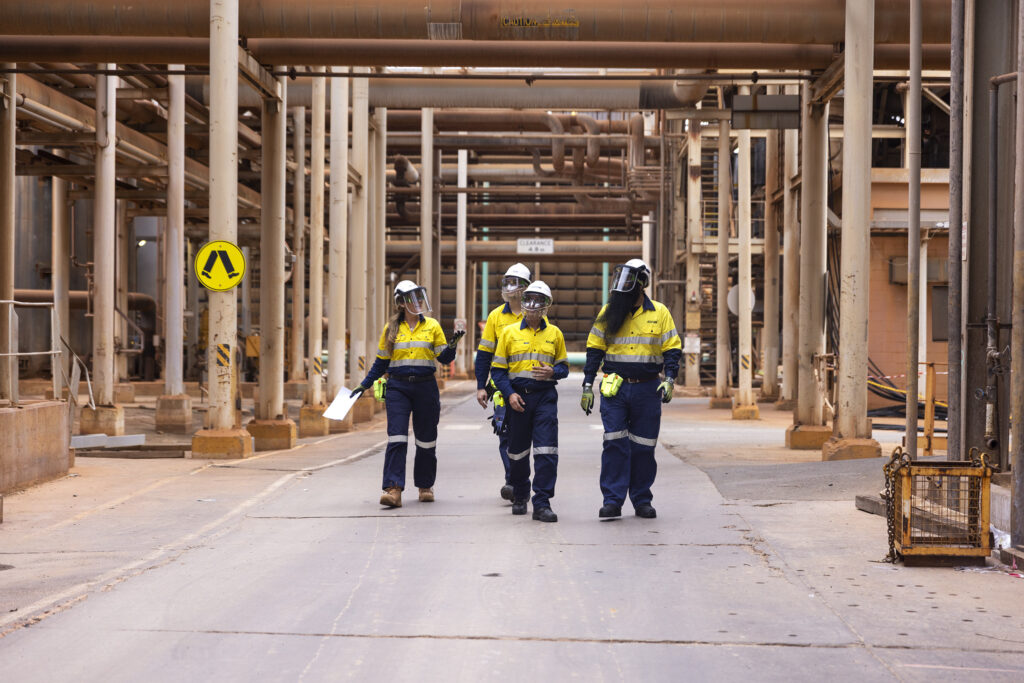
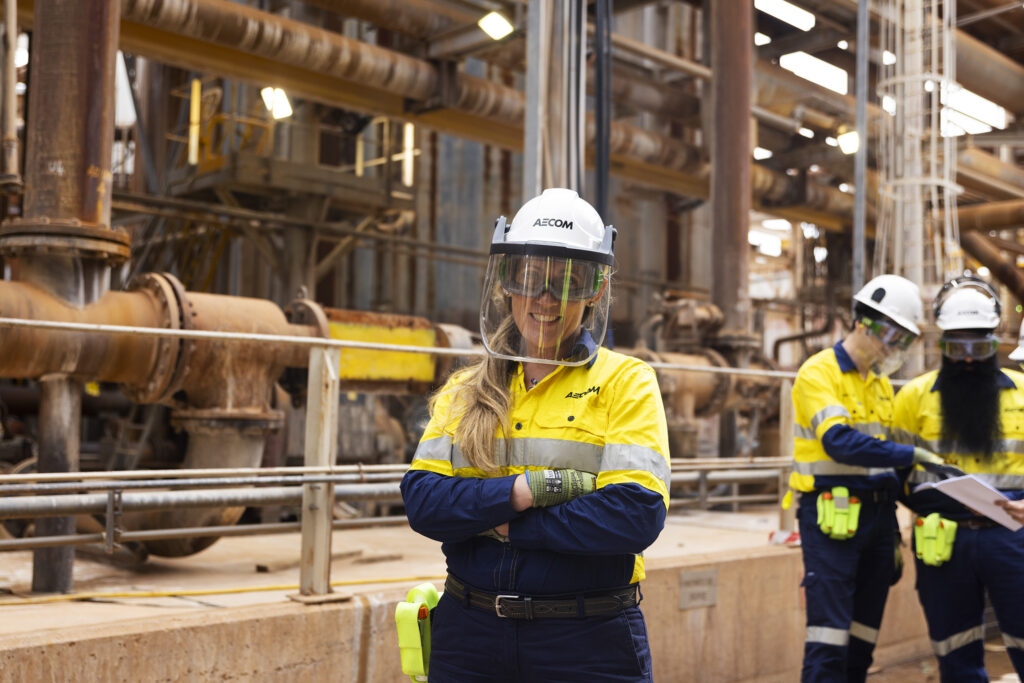
The post Resourcing the future: Meet Jade Singleton appeared first on Blog.
]]>The post Transitioning Australia’s energy system: Meet Bram Derks appeared first on Blog.
]]>When Bram moved to Australia in late 2022, he brought with him more than 17 years of experience in one of the world’s fastest-growing renewable energy sectors, offshore wind. Now leading AECOM’s offshore wind strategy in Australia and New Zealand, Bram is applying that deep global knowledge to help stand up a new industry from the ground up.
What excites you most about contributing to a new industry from the ground up?
When I moved to Australia in late 2022, I brought with me over 17 years of offshore wind experience from Europe, an industry I’ve seen grow from its early days into a cornerstone of the energy transition. Now, leading AECOM’s offshore wind strategy in Australia and New Zealand, I get to help build something new from the ground up.
This is an incredibly exciting moment. Australia is at the starting line of what could be one of the world’s most important offshore wind markets. Being part of the foundational work and laying the groundwork for future success is deeply rewarding.
Energy underpins everything we do in society. To work in a field that’s so foundational, and so full of potential, is incredibly fulfilling.
What drew you to offshore wind, and how does your background shape the way you work?
I studied aerospace engineering at Delft University of Technology in the Netherlands. That foundation taught me to think systematically, solve complex problems and collaborate across disciplines. Offshore wind is the perfect match for that mindset, it combines engineering, environment, infrastructure, logistics and economics into one field.
What really drew me in was the complexity, and the sense of purpose.
I was drawn to how multidisciplinary offshore wind is. As I gained more experience, I realised it was also a way to contribute meaningfully to the energy transition.
That sense of purpose has stayed with me throughout my career.
How do you stay motivated on long and complex projects?
The projects I’ve worked on include Galloper in the UK, Noirmoutier in France and Hollandse Kust West in The Netherlands. Some of these projects can take a decade or more to develop. They’re multibillion-dollar undertakings involving layers of technical and commercial complexity. Each one requires coordination across environmental approvals, stakeholder engagement, transmission planning, port logistics and offshore construction.
There are so many pieces to the puzzle… foundations, turbines, transmission, ports, environmental studies, and stakeholder management. Every step must be carefully de-risked.
What keeps me motivated is working with teams to solve problems. That shared sense of progress, even over the long term, is what I find most rewarding.
What infrastructure is most critical to offshore wind success in Australia?
Australia’s offshore wind sector is still in its infancy, but the opportunity is enormous. With more than 15 projects in 6 federally declared areas, and growing political and regulatory support, the foundation is forming. Now, we need to make sure the enabling infrastructure is there.
At AECOM, we’re already known for our strength in environmental and planning services, but two areas will be critical in the years ahead: transmission, because you can’t generate power at sea if there’s no way to get it to land, and ports.
Offshore wind can’t happen without suitable ports for construction and maintenance. This is a space where we offer crucial technical and strategic support.
Where do you see the biggest opportunities and challenges for offshore wind in the next five years?
The global momentum is undeniable. We’re seeing offshore wind expand from its European heartlands into new regions, Australia, Taiwan, U.S., Japan, South Korea, and other countries. Each market is different, with its own challenges, but the need for clean, reliable power is the same.
I think we’ll see a new wave of innovation in areas like floating wind, grid integration, and port design. But we also need to be realistic, this is a long-term effort.
What keeps you personally connected to your purpose at work?
I’ve always had a connection to the wind, and when I’m not at work, I’m often out windsurfing. It’s more than just a hobby, it’s a reminder of why I do what I do.
Being out on the water reminds me of the power of nature — and the responsibility we have to harness it sustainably.
The post Transitioning Australia’s energy system: Meet Bram Derks appeared first on Blog.
]]>The post Transitioning Australia’s energy system: Meet Kerrie Aldous appeared first on Blog.
]]>She has expertise in developing approval strategies, leading the preparation of project referrals, coordinating environmental impact assessments and considering the potential risks and impacts posed by proposed projects with respect to their existing environments.
What do you enjoy about your role in the energy sector?
As an environmental specialist, I’m incredibly lucky to work on infrastructure projects across many sectors.
But what I love about the energy sector, especially offshore wind, is the opportunity to contribute to truly transformational projects that are reshaping Australia’s energy future.
How has the industry evolved since you started working in offshore wind?
Since 2019, I’ve supported offshore wind projects in Australia, helping to navigate the complex approvals landscape. In the early days, there were no regulations, guidelines or precedents specifically for offshore wind — it was truly pioneering work. Since then, significant progress has been made, leading to greater clarity around assessment requirements and overall approval pathways, in parallel with the planned development of complementary infrastructure such as transmission networks and ports.
What’s a recent project you’re particularly proud of, and why?
Supporting Ørsted on the Gippsland 1 Offshore Wind Farm marine environmental surveys and assessments has been a career highlight. Not only is it a technically complex program, but the project is a game-changer for Australia’s clean energy future and it’s really rewarding to work with an industry-leading client.
What advice would you give to young professionals entering the energy field?
Say yes! There are so many opportunities across the board, from batteries and solar to wind and transmission. Your timing couldn’t be better to explore the field and get involved in as much as you can. Now is the perfect time to enter the energy sector!
What’s a surprising skill or hobby you have outside of work?
Hobbies, what hobbies?! When I’m not at work, you can find me with my three girls; watching Disney movies, sipping coffee at the playground or getting colourful and crafty…its messy, chaotic and (mostly) good fun!
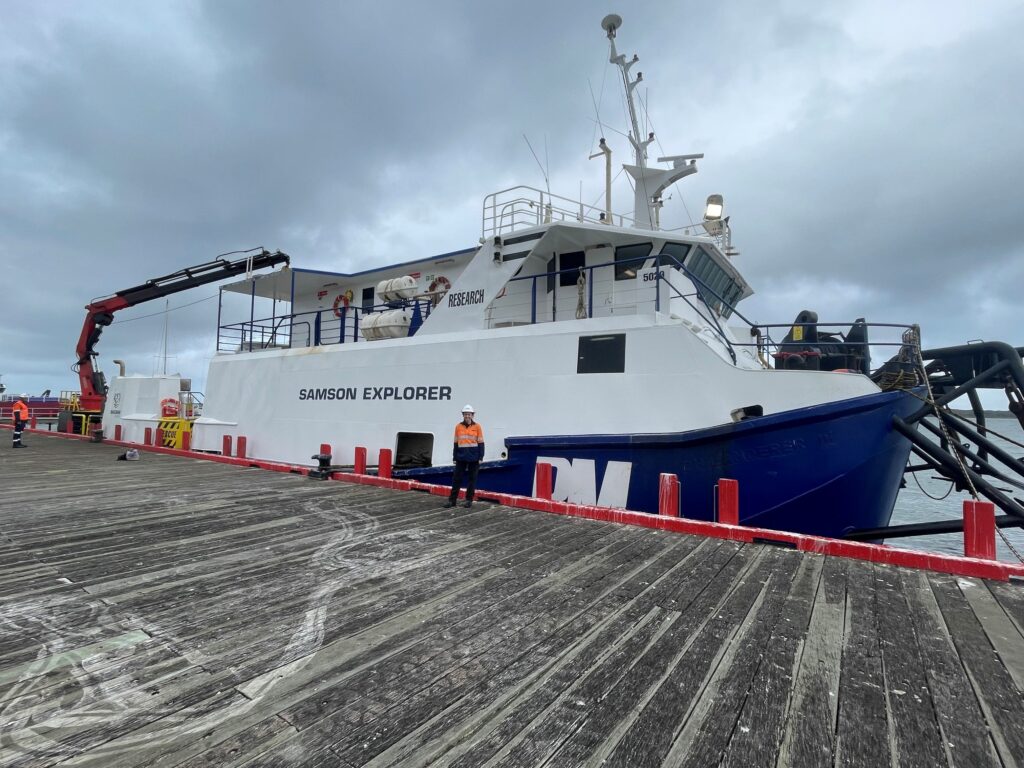
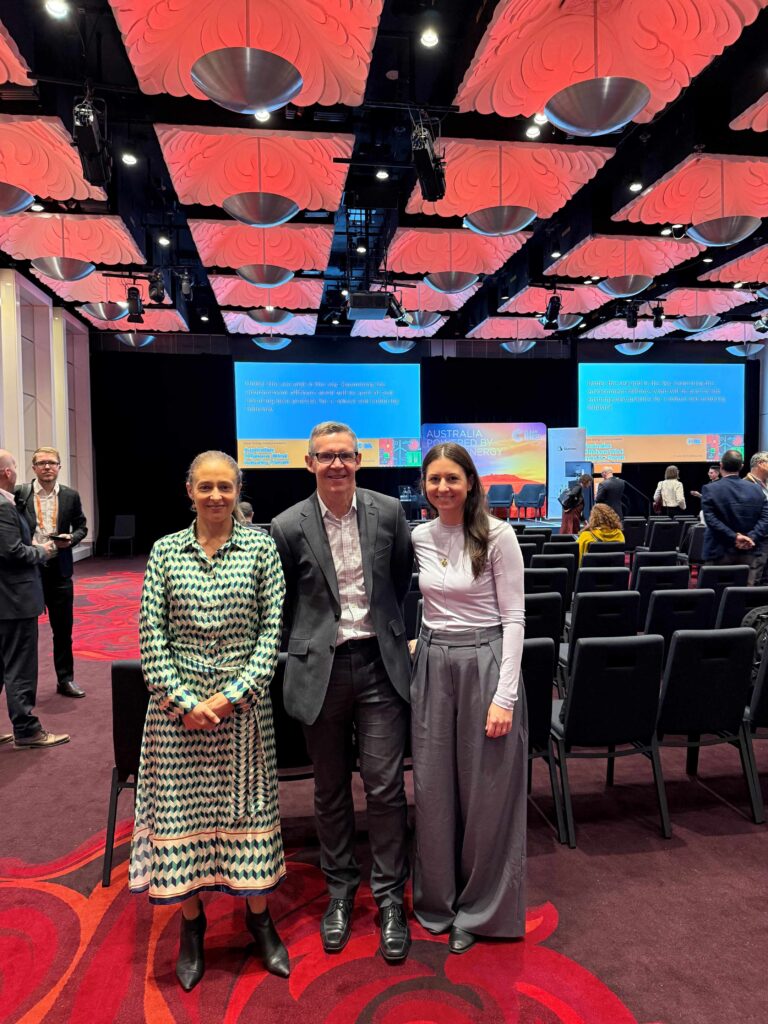
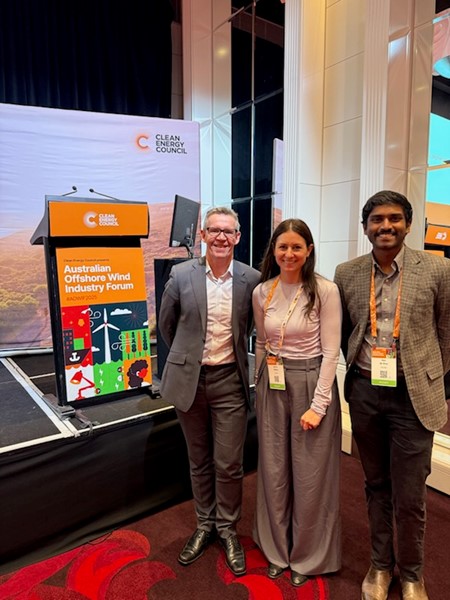
The post Transitioning Australia’s energy system: Meet Kerrie Aldous appeared first on Blog.
]]>The post Transitioning Australia’s energy system: Meet Denan Kurejsepi appeared first on Blog.
]]>What has shaped your passion for the energy sector and power systems engineering?
Ever since I saw my first transformer phase effective diagram, I was in. I haven’t looked back since.
My career has been shaped by my passion for the game-changing potential of solar energy and battery storage, which are growing exponentially each year. This duo is the cornerstone of Australia’s clean energy future, and it’s scalable, flexible and rapidly evolving.
I like being part of the sector that solves so many of our problems, ones that couldn’t be solved a decade ago without solar and battery solutions.
What’s your career journey, and what kinds of projects are you working on now?
Having worked in Abu Dhabi, Dubai and Bahrain, I bring a global lens to my work. But I’ve now settled in WA, where I’ve spent most of my career. I joined AECOM from a role at Western Power, which was a surprisingly smooth transition. I was impressed by how integrated the team is. There are no silos or barriers, we just get straight into the work. It’s genuinely collaborative.
Most of my recent work has focused on high-voltage grid infrastructure, like big, complex 500kV transmission projects. These projects are critical for WA’s transition.
We’re figuring out how to integrate AC and DC systems, how to expand existing networks, and do it all while navigating environmental and social concerns. It’s a real intersection of engineering and policy.
What makes AECOM stand out?
We can deliver the hardware that connects renewable generation to where it’s needed. We’re building our team here in WA, training them and making sure they’re ready for the scale of change ahead.
We’ve got a rare mix of technical depth and practical delivery experience. We don’t just model solutions, we’ve built them, tested them and commissioned them. That’s a unique position to be in.
What challenges is the sector facing in Australia?
There’s a big skills gap. When I started, there was a 30-year gap between me and the next senior power systems engineer. We just hadn’t trained people in this space for decades, and now we’re feeling it.
Community resistance is also big. We all know of NIMBYs [Not In My Backyards]. Now it’s BANANA, which is Build Absolutely Nothing Anywhere Near Anything. Planning timelines are ballooning, and a lack of community acceptance is a huge barrier to getting the green light on projects.
Neither the government nor the private sector is stepping up to lead, creating a gap where strong leadership is missing.
What opportunities are there in the sector?
REZs (Renewable Energy Zones) are thousands of kilometres from where energy is needed. Our existing systems are near capacity, and system strength and frequency control are still unresolved.
I know this sounds like I’m just listing more problems, but these are exciting challenges that make it a good time to be an electrical engineer.
I’m very optimistic. There’s no shortage of problems worth solving.
There’s more coming for batteries, because betting against them is a surefire way to lose money. We’ll see more virtual synchronous machines too, to help manage inertia.
The grid is getting smarter, and so are we.
So, how do you keep the balance? What do you like to do outside of work?
I’m obsessed with astronomy. It’s humbling. Looking up at the stars reminds me how small we are. I used to be one of the telescope operators at the Perth Observatory, taking people on tours of the night sky.
The post Transitioning Australia’s energy system: Meet Denan Kurejsepi appeared first on Blog.
]]>